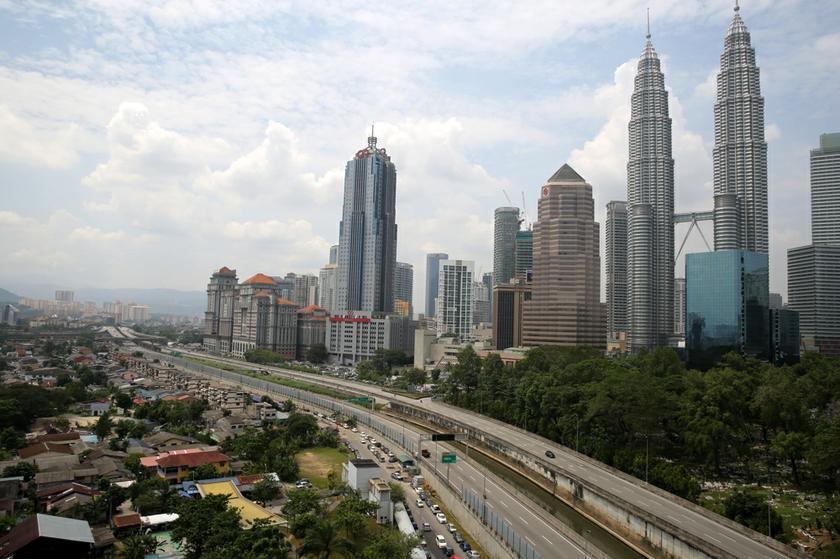Malaysia’s income growth success story is an unequal one, and here’s why

Much of that prosperity went to elite Bumiputeras who by 2014 formed a third of the country’s wealthiest households.
(MMO) – The country’s richest 10 per cent controlled nearly half of total income share from 2002 to 2014 with ultra-wealthy Bumiputeras registering a remarkable 8.3 per cent growth in earnings, a recent study on inequality showed.
The study, which aims to determine which ethnicity and class benefited the most from the post-Asian financial crisis period, found a worrying trend of growing inequality in Malaysia, which chief researchers Muhammed Abdul Khalid and Li Yang from the Paris School of Economics said up to now had been severely underestimated.
Muhammed said that the total income share of the bottom half of the population was just half of that controlled by wealthy Malaysians within the same period, with the remaining going to the middle percentiles.
“While the study finds that Malaysia enjoyed inclusive growth during the period 2002 to 2014, interestingly the biggest beneficiary was the rich Bumiputera,” he told Malay Mail.
The Income Inequality and Ethnic Cleavages in Malaysia Evidence from Distributional National Accounts (1984-2014) was the first attempt at measuring inequality in Malaysia by compiling and analysing data obtained from national accounts, surveys, and fiscal data.
The methodology, developed by world-renowned economist Thomas Piketty to measure inequality in his home country of France, seeks to estimate the distribution of pre-tax national income including undistributed profits and other tax-exempt capital income among equal-split adults.
Previous official inequality measurement tools mostly depended on data collected from the Household and Income Expenditure Survey, which some economists found to be unreliable.
Official estimates between 1970 and 2014 stated that the Gini coefficient for Malaysia has dropped considerably from 0.51 in 1970 to 0.401 in 2014, yet calculations by Muhammed and Li Yang show that inequality is underestimated by about 20 per cent.
The new study found that overall income growth had been inclusive with the bottom half of the population having enjoyed the biggest total real income growth at 5.2 per cent during the post-crisis period, while the middle class registered a 4.1 per cent rise.
On the other hand, the top 10 per cent saw their income grow by 2.7 per cent while the country’s wealthiest households registered a 1.6 per cent rise in personal earnings.
Yet, much of that prosperity went to elite Bumiputeras who by 2014 formed a third of the country’s wealthiest households.
The Chinese, which in 2002 make up more than two-thirds of the richest people, saw its share reduced to just over 60 per cent.
Ultrarich Indians also recorded strong growth in personal earnings registering at over 3 per cent.
Muhammed and Li Yang said the disparity within the top income earners reflected the persistent trend of inequality between the three major ethnicities, whereby the Chinese, despite their small numbers, controlled up to a fifth of total income share by 2014.
The Bumiputera, forming nearly 70 per cent of the population, only make up 33 per cent of the adults in the top 1 per cent while the Indians, with a population of just 7 per cent, make up nearly 6 per cent.
“We conclude that in this period, Malaysia’s growth features an inclusive redistribution between income classes, but with a twist between racial groups,” it said.
For Malaysia’s middle class, income grew by 4.1 per cent for all ethnicities by 2014 while it was 5.4 per cent for the Bumiputeras in the bottom half of the population, with the Chinese not far off at 4.9 per cent followed by the Indians at 4.7 per cent.
Comparing this to the ultrarich, the study found that the average growth rate per adult national income for the top 1 per cent Bumiputera grew by 8.3 per cent, while their Indian counterparts raked in a steady rise in earnings’ share at 3.4 per cent.
Chinese wealthy adults, however, were less fortunate. The study found the share of income among the Chinese ultrarich contracted by -0.5 per cent, a finding that starkly differs from claims that this economically “dominant” minority group has continued to pile up wealth over the years.
The same was found of Chinese in the top 10 upper percentile, which registered an income growth of merely 1.2 per cent. Bumiputera and Indian upper-class income, however, grew by 5.4 and 4.6 per cent respectively.

